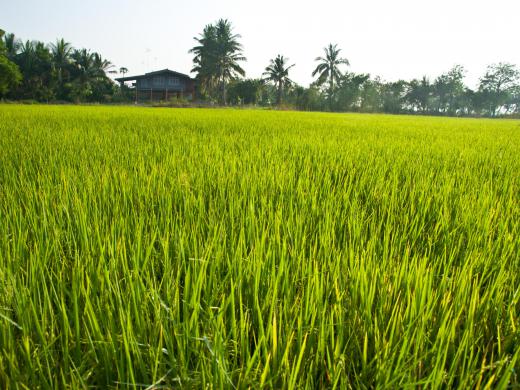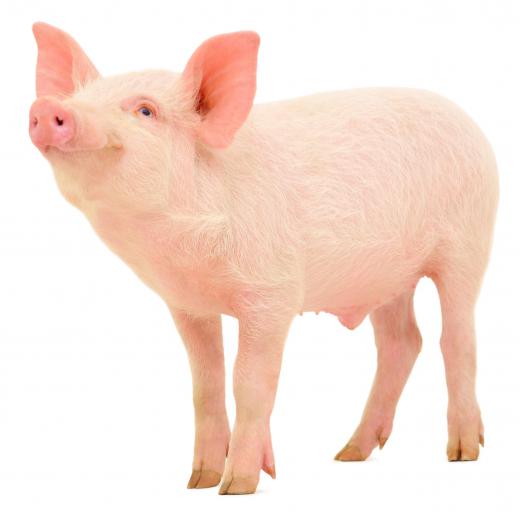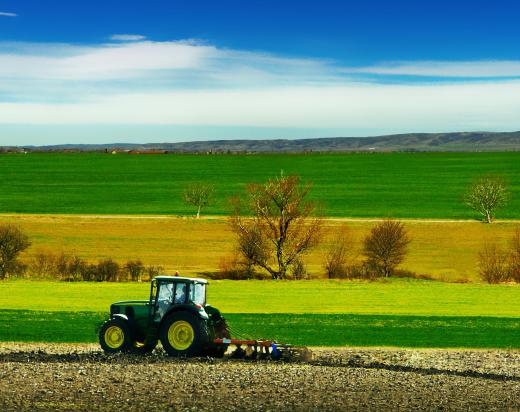Agricultural raw materials fall within three general groups. The first and most essential of these are basic natural resources that are input into the agricultural process to produce various types of food, including fresh, unpolluted water and fertile soil, or sea-based environments where life can grow such as coral reefs along continental shelves. The second most vital category of agricultural raw materials are seed stock for growing plants, domesticated livestock, and natural organisms in the environment that benefit the production of these species, such as pollinating insects like bees and bacteria and earthworms in the soil that break down decaying organic matter for plant nutrients. The final group of agricultural raw materials that is vital to healthy and large scale production of food supplies in the 21st century includes fertilizers, pesticides, or other organic means of controlling damaging insect populations, as well as mechanized equipment and reliable sources of energy to run modern farming operations.
Arguably among the most vital types of raw materials for food production are those of arable land and clean, fresh water supplies in abundance. Estimates are that the cultivation of arable land for crop production has been on a steady rise since the early 1960s. As of 1961, 1,351,000,000 hectares (1.351 x 1013 square meters) of land were under cultivation globally, and this number increased to 2,682,000,000 hectares (2.682 x 1013 square meters) by the year 1998. This is estimated to be 36% of all dry land on Earth that is fertile enough so that it could potentially be used to grow crops. By contrast, it is estimated that, as of the year 2000, nearly 26% of all fresh water on Earth generated by evapotranspiration and runoff from land sources was used for the combined agricultural purposes of grazing land, crop land, and forestry product production.

Livestock and seed are second only to land and water as key agricultural raw materials in the global food supply chain for humanity. Though the Earth reached a human population of 7,000,000,000 people in 2011, there were 19,000,000,000 chickens living along side them, with an additional 1,400,000,000 cattle and approximately 1,000,000,000 sheep and pigs as well. The United Nations estimates that, as of 2011, 30% of the entire Earth's dry land mass is now used exclusively for grazing or to grow grain to feed this livestock and 70% of all the grain grown by humanity is grown for consumption by these animals alone.

Since agricultural supplies exist in limited quantities, there is often a valid argument for the human population converting to vegetarianism. Supporting such a large number of livestock animals is considered an inefficient use of agricultural raw materials by some, as it takes on average 16 pounds of grain to produce one pound of meat, and 11 times more energy than it would to produce an equal amount of plant-based protein. Fresh water is also used in large quantities to raise animals for food, with estimates that 2,400 gallons (9,085 liters) are needed to create one pound of meat versus only 25 gallons (95 liters) of water to generate one pound of wheat.

In terms of advanced agricultural raw materials that are considered to be vital to enhance crop yields the numbers are just as large. As of 1999, the world was using 141,360,000 metric tons of fertilizer annually and 26,334,690 tractors to cultivate crops with these chemicals and other machinery. This is an increase in use of about 150% for fertilizer and machinery for the US alone since the 1960s, with a corresponding increase in crop yields in the US of about 100% over the same time period.
